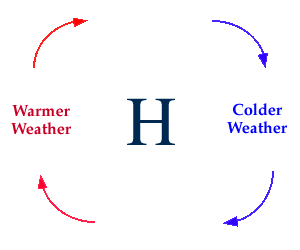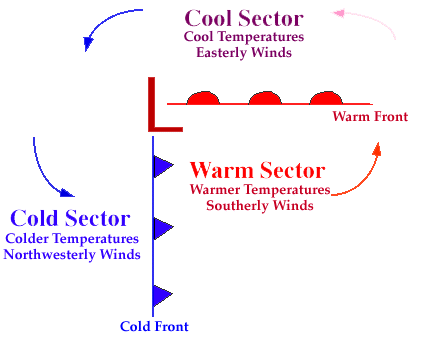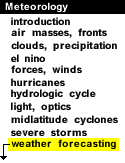
|
The positions of high and low pressure centers can greatly influence a forecast. Fair weather generally accompanies a high pressure center and winds flow clockwise around a high. This means that winds on the back (western) side of the high are generally from a southerly direction and typically mean warmer temperatures. On the front (eastern) side of a high, winds are generally from the north and this typically results in colder temperatures.

Forecast Tip:
If a city is expected to be located west of a
high pressure center
then warmer temperatures are likely. However, if the city
is expected to be in the northerly winds of a high pressure center, then
forecast colder temperatures. Cities under the influence of high pressure
centers can expect generally fair weather with little or no precipitation.
In contrast, clouds and precipitation generally accompany a low pressure center and winds flow counterclockwise around lows. This means that winds on the back (western) side of the low are generally from a northerly direction and typically mean colder temperatures. On the front (eastern) side of a low, winds are generally from the south and this typically results in warmer temperatures.

Forecast Tip:
If a city is expected to be located west of a
low pressure center
then colder temperatures are likely. However, if the city
is expected to be in the southerly winds of a high pressure center, then
forecast warmer temperatures. Cities under the influence of low pressure
centers can expect generally cloudy conditions with precipitation.

cloud cover |
|

temp advection |




